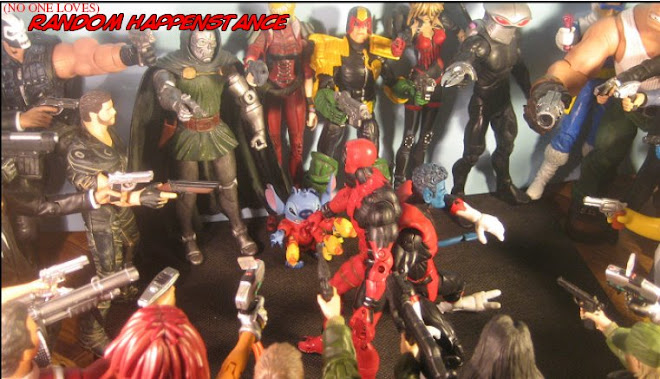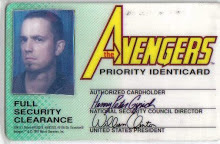 Scans from Nexus the Liberator #3-4, written by Stefan Petrucha, art by John Calimee, inks by John Nyberg. When Baron and Rude took Nexus to Dark Horse in 1992, they also released this four issue miniseries, which I believe was the first non-Baron written Nexus. It might have been a test to see if Nexus could become a franchise book, sadly, it did not.
Scans from Nexus the Liberator #3-4, written by Stefan Petrucha, art by John Calimee, inks by John Nyberg. When Baron and Rude took Nexus to Dark Horse in 1992, they also released this four issue miniseries, which I believe was the first non-Baron written Nexus. It might have been a test to see if Nexus could become a franchise book, sadly, it did not.Which is a damn shame, because this was a pretty good try. The only fault I see with it, is that it was set deep back in the book's continuity: on the return trip to Ylum after Nexus' first public execution on Thuneworld, Horatio has another dream of a mass-murderer, and has to make a little detour. The dream comes a little sooner than Nexus would've preferred, since he was still accompanied by refugees from Thuneworld, including Dave, who would become one of his closest friends.

Nexus arrives on a world ruled by a theocracy, where the ruling class killed thousands of protesters with a drug that caused "sleeplessness without agitation," dooming them to incoherence, then insanity and death. Although he's able to kill the evil religous leader Gigo, Nexus then has to deal with other problems, including the idolation of the people, rival splinter factions, a possible new girlfriend, and the fact that the Gigo won't stay dead...
Even though as a book, Nexus is perhaps best known for the art of co-creator Steve Rude (and rightly so), there have been other artists of note that have done some good work, in some cases early in their career. The list of guest or regular Nexus artists includes Paul Smith, Hugh Haynes, Steve Vietch, Keith Giffen, and more. All this week, we're going to check out some non-Rude Nexus issues; plus on Tuesday, a special homemade strip!


1 comment:
Hey, thanks for posting this - haven't thought about Nexus in ages, though I remain pleased to be,as far as I know, the first non-Baron writer of Nexus (have there been others?).
The book was actually produced for First Publishing - they wanted to expand the franchise by trying a few series set in Horatio's past - hence the timeline.
It lay in a drawer for a while until Dark Horse revived the series, and Anina Bennett (formerly from First, then at Dark Horse) pointed out they had this completely finished mini-series they could publish. So, thanks again, Anina!
Post a Comment